European Hamster (Cricetus cricetus) — Biology, Behaviour and Conservation
The European hamster (Cricetus cricetus), sometimes called the common or black-bellied hamster, is the largest wild hamster species in Eurasia. It is a solitary, burrowing rodent that builds deep multi-chambered tunnels, hibernates over winter, and is currently experiencing serious population declines across much of its former range.
Let us explore what the world of these fantastic creatures is like. This detailed guide will also tell you everything you need to know about the captive life of European hamsters.
The Basic Information About The European Hamster
The European hamster belongs to the family Cricetidae and is the only living species of the genus Cricetus. Adults are much larger than pet hamsters: head-to-body length is typically 20–35 cm and weight ranges ~220–460 g; the tail is short (≈4–6 cm). Fur is patterned — brown dorsal coats with white patches and a darker (often black) underside in many individuals.
Read more: The Ultimate Guide to Campbell’s Dwarf Hamsters
These are found in Germany, Eastern Europe, and France. However, you can easily distinguish them from every other breed of a hamster because of their unique physical characteristics and specific behavior.
Overview of the Species
The European Hamster is the charming burrowing mammal known scientifically as Cricetus. This Animal has small ears and big black eyes that fascinate you when you look at them. A robust and roundish head covered in fur that may come in light brown or grey, allowing it to camouflage and blend itself with the environment well enough.
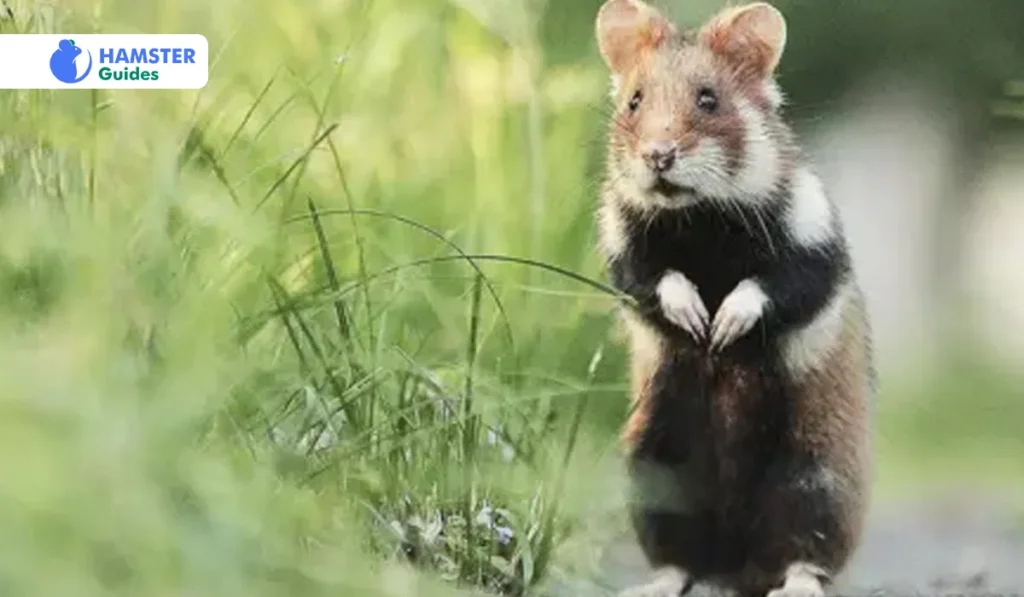
It makes this little creature so adorable with an endearing appearance. Its body typically measures around 11-14 inches long and has a tail usually ranging from 11-2 inches long.
Physical Features Characteristics
European Hamsters have unique physical characteristics which are fascinating and alluring for being a pet. Apart from their beautiful appearance, they have peculiar characteristics of camouflaging that help them survive underground.
They have their fore and hind feet that are best suited to live underground. Also, they have very sharp claws used for digging, storing food, and maintaining their subterranean lifestyles.
Read More: The Dwarf Hamster Lifespan: Key Facts and Care Tips
Moreover, their cheek pouches allow them to carry food, nest, and store materials more efficiently. Their thick fur is rich enough to provide sound insulation during winter.
This dense fur also allows them to sleep comfortably during their hibernation, which lasts around six months. During this time, European hamsters’ low metabolism helps them survive on the fat reserves already accumulated during summer.
Lifespan and Health
European Hamsters commonly live between 3-5 years in the wild. However, proper nutrition and care can extend this animal’s life up to 8 years, even in their captive life as pets. The important factors, including genetics, diet patterns, and living conditions, determine the age of these species.
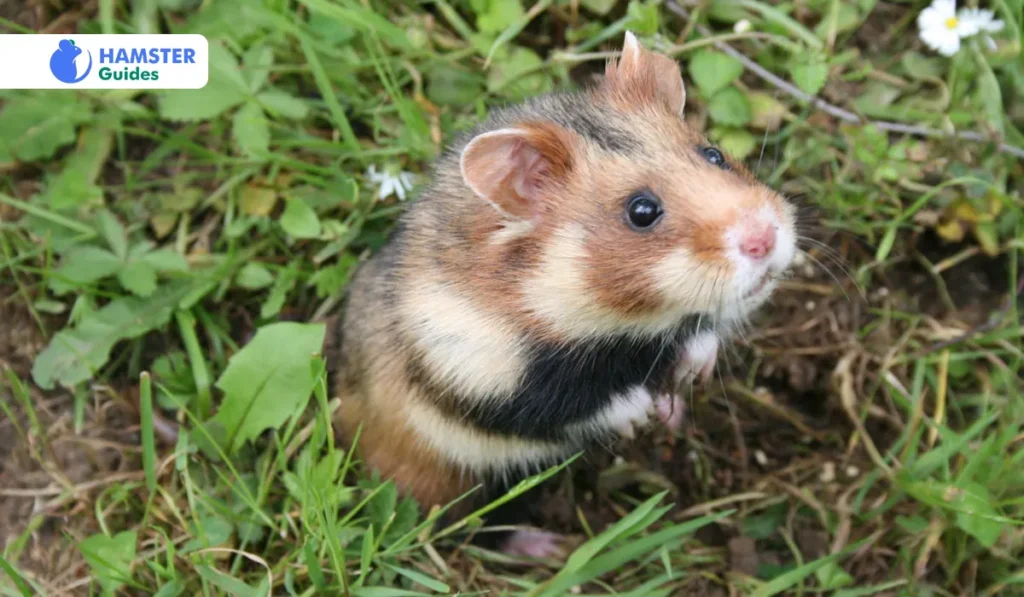
So, for European hamsters, a balanced diet and regular vet checkups are the best options to maintain optimum health and longer life. Fresh veggies, pellets, and occasionally treats make up a well-maintained diet. Furthermore, providing a spacious, hygienic enclosure or cage with proper exercise gadgetries will also improve their happiness and overall health.
Did you know?
The European Hamster is known for its exceptional digging abilities.
These little creatures can make complex and astonishing burrow systems up to 1.5 meters deep into the ground. It has several chambers for different purposes, including breeding areas, food stores, and so much more, and separate rooms where waste is disposed of.
European Hamsters are omnivores who eat plants and insects for their meals. This means they mainly live on grains, seeds, and roots. However, they prefer eating worms such as insects, snails, and small vertebrates. This mixed diet can give them all the necessary nutrients for good general health.
Read More: Are Hamsters Nocturnal?
An Interesting Fact
Furthermore, European hamsters have incredible reproductive ability. A female hamster can give birth to three to six pups annually in one litter, which contains about six to twelve pups on average. These newborns are initially blind, hairless, and entirely dependent on their mothers for warmth and nourishment.
With time, as they grow, their fur grows on them while their eyes become sharper, enabling them to see better and, hence, move around exploring their environment thoroughly.
In general, the European Hamster is an incredible animal with its unique physical appearance and behavior. They indeed amaze us through their ability to underground living adaptation, hibernating habits as well as foraging patterns, which range widely in terms of nutrition. These lovely rodents will steal your heart if you decide to keep or encounter wild hamsters.
The Natural Habitat of the European Hamster
European hamsters inhabit steppes, agricultural fields, meadows and open grassland from Western/Central Europe east into Russia and parts of western Asia. They prefer soils they can dig deeply for elaborate burrows and tolerate agricultural mosaics — but land-use changes have fragmented many populations.
The European hamster can survive significantly in diverse conditions but has specific habitat requirements for the betterment of its conservation and welfare. These needs must be known as they are important in their survival.
Read More: Do Hamsters Live in The Wild?
The European hamster (Cricetus) is an intriguing creature that thrives in some places within Europe. It can be found across regions such as France, Germany, Eastern Europe, etc. This means it adapts to various landscapes, from steppes to cultivated fields and meadows. They have the potential to adapt to different areas.
However, for their better nourishment, health, happiness, and longer life in a captive environment and for conservation, you need to arrange the required factors of their natural habitats.
Geographic Distribution
European hamsters are found widely throughout Europe. Primarily in France, Germany and countries of Eastern Europe. Its most suitable habitats are open grasslands, agricultural fields and meadows teeming with plenty of food supplies.
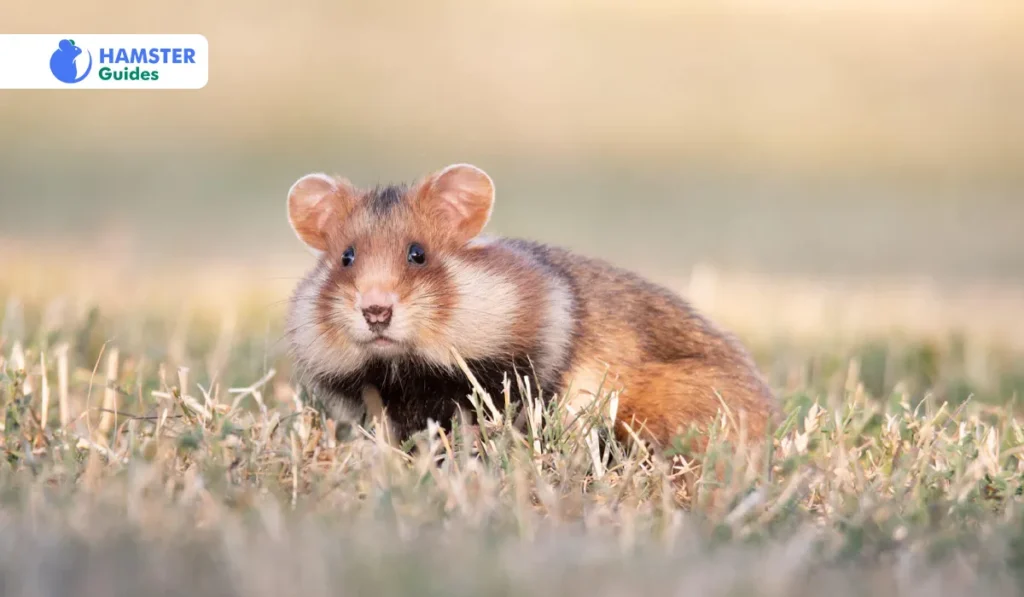
These hamsters play a pivotal role in the flow of natural ecosystems. They help their environment by scattering seeds and are good soil aerators while turning soil in their burrows. Their presence in agriculture fields has both positive and negative sides.
However, conservation efforts must be made to balance protecting wildlife and human activities. Both the benefits and drawbacks of their presence in agricultural settings.
Preferred Living Conditions
European Hamsters are good architects, creating natural and intricate burrows. They love sandal or loamy soils that they can easily dig. Then, these animals live and escape danger in their complex subterranean burrows. In winter, these tunnels and chambers serve as sleeping platforms and protection against predators.
Creating and designing European Hamster living environments in captivity should closely resemble their natural environment. For their burrowing activities, they require materials and soil for their bedding as close to satisfy their instinct. Additionally, adding tunnels and hiding places is crucial to showing them their natural environment and keeping them healthy.
The Behavior and Lifestyle of the European Hamster
This species is primarily nocturnal/crepuscular and constructs deep, multi-chambered burrows used for nesting and large food stores. In temperate parts of the range they hibernate (roughly mid-October to mid-March), waking at intervals (~5–7 days) to feed on stored food. Their way of living and behavior can give you insight into this fantastic animal. It is essential to check and observe how they act socially, such as in terms of their activities and routine patterns at home. So, in this way, you fully understand who they are.
Read More: Can Hamsters See in the Dark?
Daily Activity Patterns
As you know, this species is primarily nocturnal. They do most of their activity at night. However, this doesn’t mean that they remain idle. Throughout the day, they maintain their fur and rearrange their nests. This ensures hygiene and a healthy living space.
European hamsters come out of their burrows with the approach of dusk. They use their strong navigational skills to forage for food and find their places depending on their well-developed memory and smell skills. They often travel long distances for excursions and sometimes in search of food locations. Their creativity and adaptability help them survive in different environments.
Social Behavior
Though Europeans hibernate for most of their time, they spend a few good months before returning to the hole where they live alone. The males are aggressive as they fight furrily for territories and females.
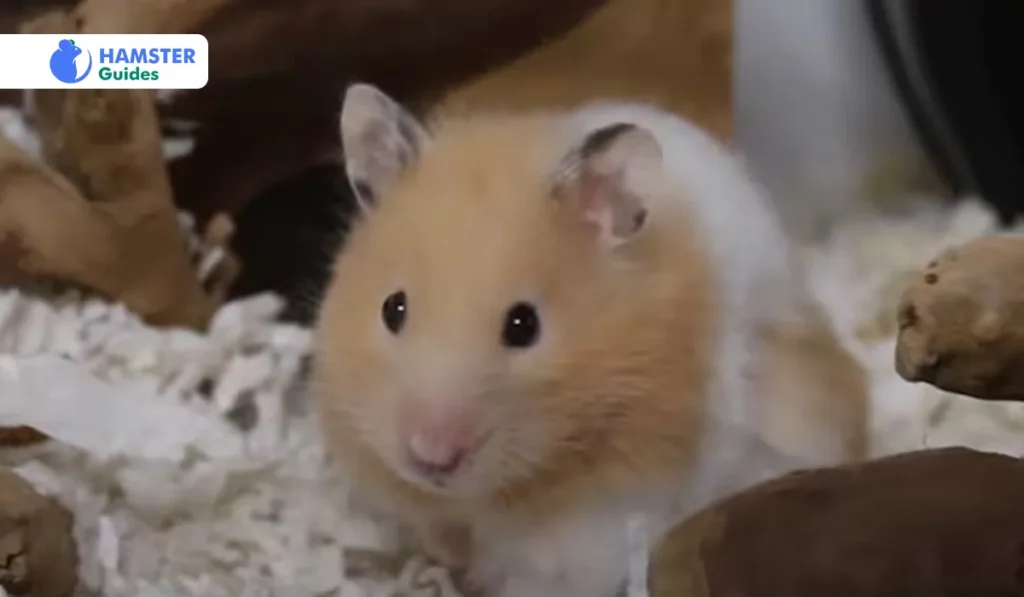
Male hamsters work hard by all means necessary to achieve reproductive success, which is a testament to their resilience and determination.
Besides their brief mating period, these hamsters spend their time shunning confrontation with other individuals and keeping it mainly to themselves. Still, you can’t say they remain isolated.
Communication has a necessary role in their life. They have exceptional abilities such as scent marking or vocalizations. These abilities help them define communication threads and territories. The complex habitat structure is made clearer by their methods of communication, revealing the intricate nature of social interactions and indicating the preservation of borders. You can learn more about European hamsters’ social interactions and daily routines through studies of their behavior.
These incredible animals have a wide range of environmental adaptations. They show their perseverance and resourcefulness according to their habitat. As you continue to study them, you will discover more about their way of life and fascinating behavior.
The European Hamster’s Diet
In their diet, European Hamsters have varied and flexible choices that are easily accessible in their habitat. They are opportunistic eaters, meaning they consume a variety of generally available foods, even in their changing landscapes.
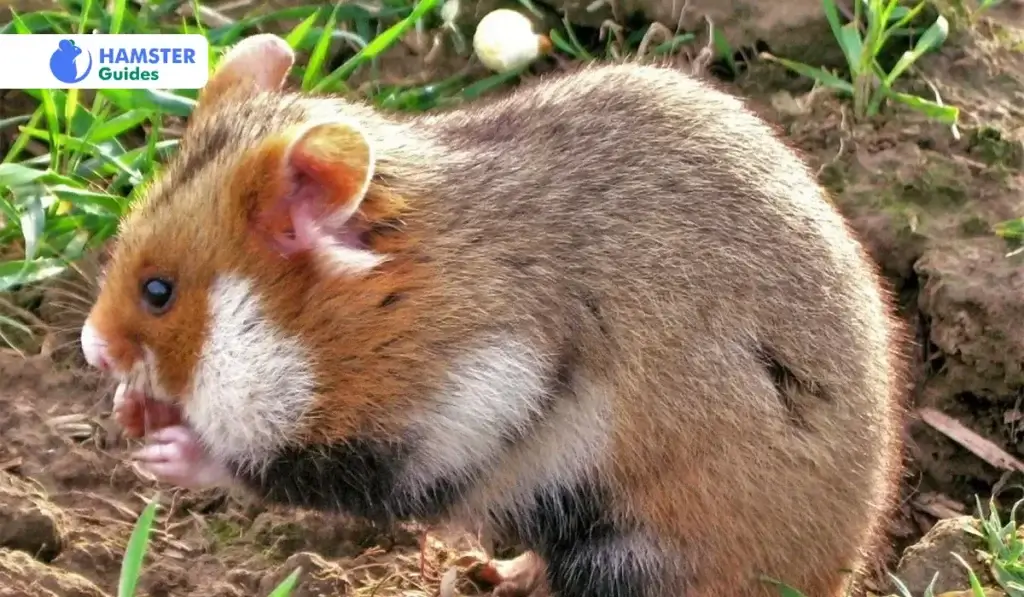
This helps them to survive, especially when they move to a new environment. The further details regarding food consumption are as follows:
Common Food Sources
European hamsters have an omnivorous diet. They consume a variety of foods, including grains, seeds, roots, insects, and small vertebrates.
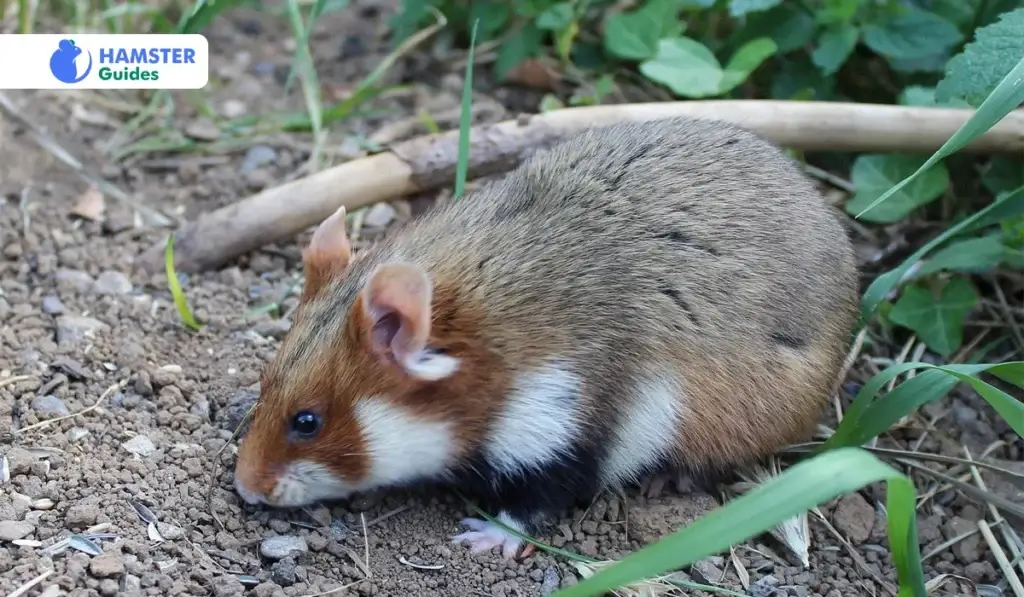
In their natural habitat, they depend primarily on crops such as wheat, corn, and sunflower seeds. However, they also eat a variety of wild plants, expanding their food supply, particularly during the winter months when food sources are hard to find.
These amazing creatures are known to keep and store food in their burrows. This behavior not only helps them survive when resources are scarce. But it also demonstrates their intelligence abilities as well as forward-thinking.
Feeding Habits and Preferences
European hamsters in captivity should be fed a balanced diet that reflects their natural food sources. For European Hamsters, you can offer commercial pellets.
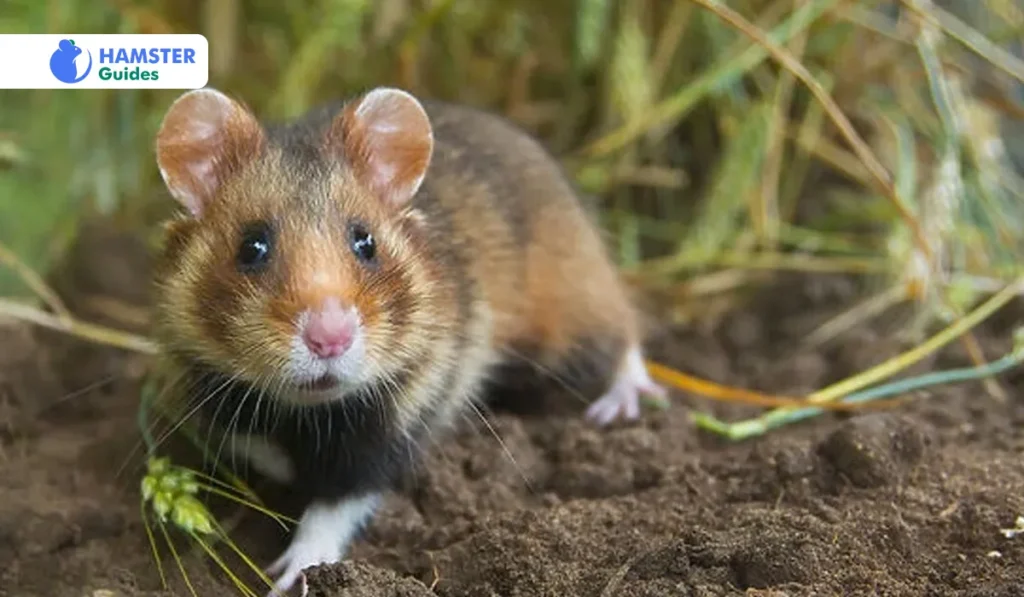
Add fresh veggies, fruit, and small nuts or dried fruit as treats. Give them different nutritious foods and let them exercise. This keeps them happy, active, and in good shape.
Read More: Can Hamsters Eat Butter?
Fresh water is vital for hydrating European hamsters. It will affect their overall Health. Always have clean water available. These hamsters need to stay hydrated to remain healthy. Proper nutrition and exercise will also improve their general health and their happiness.
Reproduction and Life Cycle of the European Hamster
The European Hamster has an incredible life cycle. Their reproductive activities are also extraordinary, which can show in different stages of their existence.
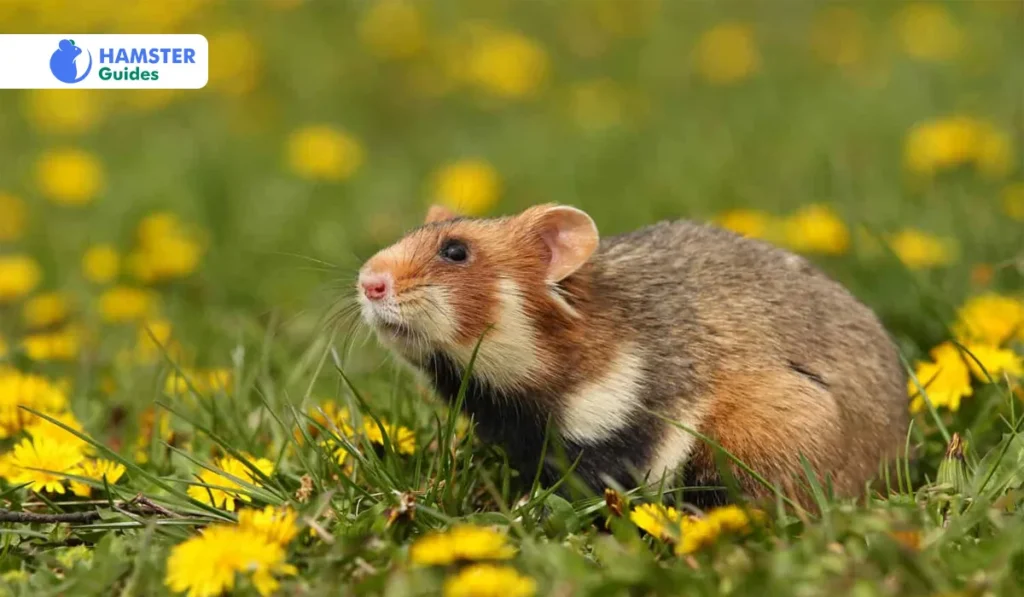
European Hamsters are amazing animals. They are commonly found in Europe. These Rodents have a unique ability that helps them survive in the wild and in a captive environment.
You can also discover more details about these complex creatures as you go through this article.
Mating Rituals
European Hamsters breed mainly from April to September. During their mating season, male hamsters compete with other male Hamsters. While fighting with other males, they establish their territory. Once any one of them made his territory, he attracts and mates with multiple females.
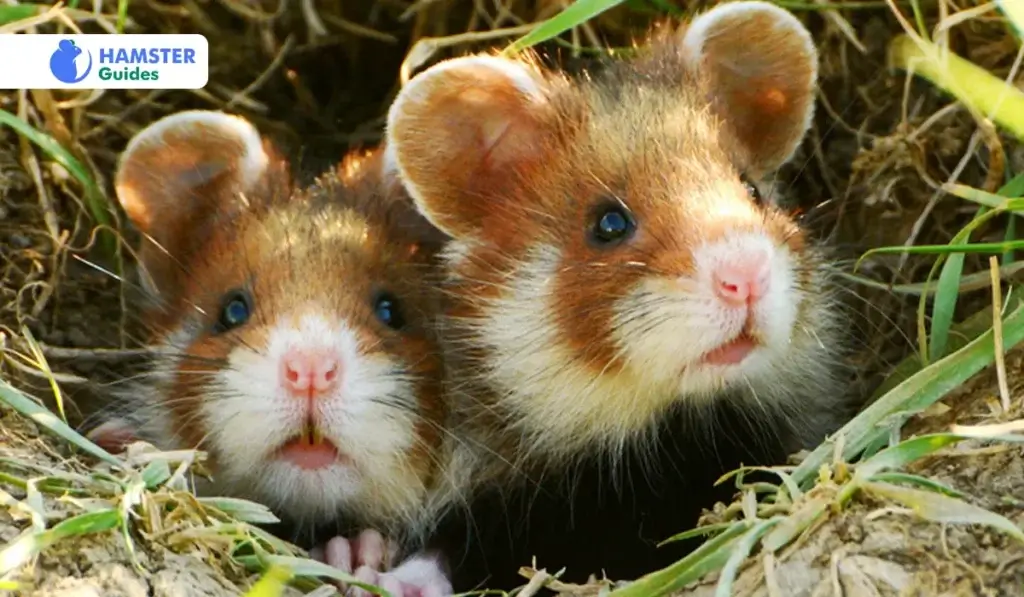
In the same way, female European Hamsters also exhibit their particular mating behavior. Female hamsters carefully select their mates by considering the male strength and dominance displayed. They choose the most suitable partner for breeding.
Ensuring that their offspring inherit the most potent genes. This selective process ultimately enhances the survival prospects of the young hamsters in their challenging environment.
Gestation and Birth
The period of pregnancy of European Hamsters is between 18 and 22 days. The female hamster delivers roughly 5 to 12 pups. After birth, the pups are blind and without fur.
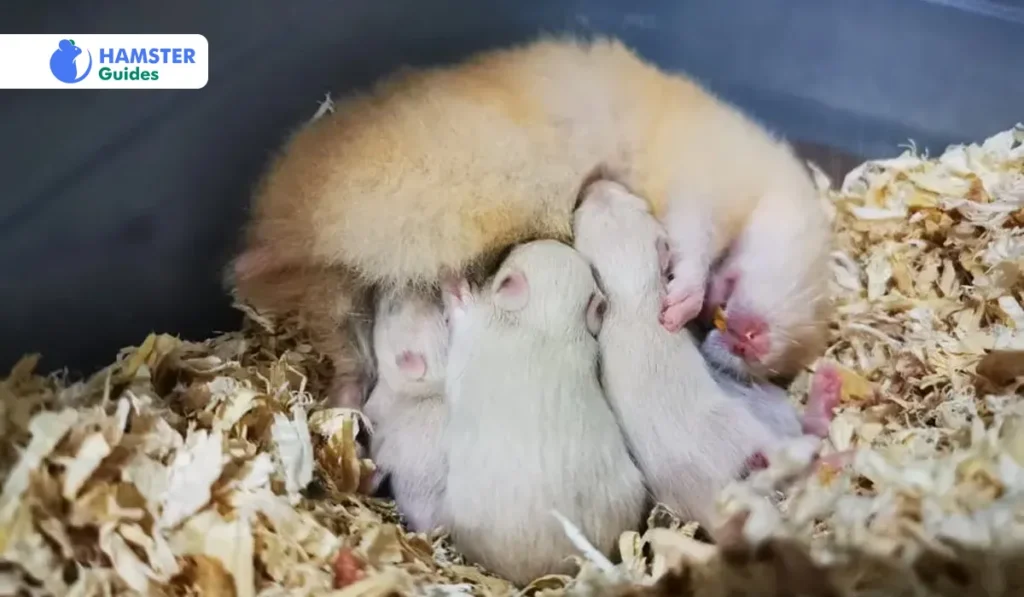
The female hamster diligently takes good care of her little offspring. She provides nursing and nourishing them. She continues this care until her little offspring open their eyes and explore their environment.
Read More: Do Hamsters Eat Their Babies?
During their early days of life, the new-born hamsters are dependent on their mom for warmth, nourishment, and protection. The mother sets up a safe nest to shield and protect them from dangerous environmental threats. These safety measures from the mother’s side ensure their rapid growth and quick learning to combat the challenges ahead.
She helps their young hamsters grow quickly and prepare for the future. These nurturing surroundings allow the younger hamsters to develop at a fast pace, and she prepares them for the demanding situations ahead.
Growth and Development of Young
During their first few weeks, baby hamsters depend only on their mother’s milk for nourishment. They start eating solid food around 14 to 21 days and slowly get off their mother’s milk.
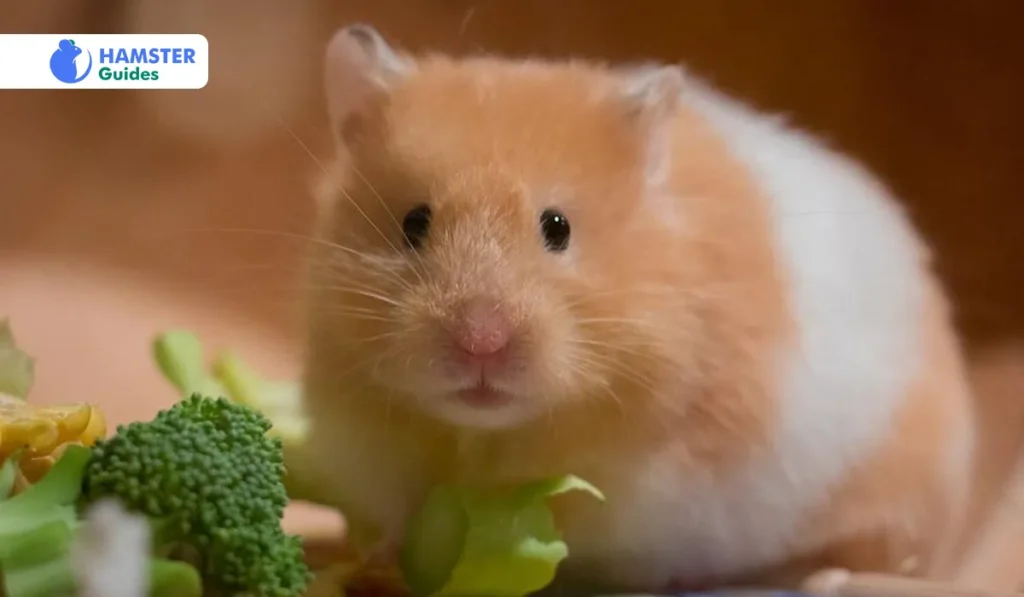
Over time, they eventually gain independence, start exploring independently, and prepare to face the world’s difficulties.
Young European Hamsters develop most effectively through exploration and learning. They follow their parents’ behaviors. They build their skills in hunting, burrowing, and social interaction. Through play and interaction with their siblings, the young hamsters learn essential survival skills that will serve them well in adulthood.
Conservation Status of the European Hamster
The European Hamster faces different threats and challenges. These challenges impact its population as well as their survival.
These small burrowing rodents, called Cricetus cricetus, are remarkable and found in Europe. They play an important role in their Ecosystem. They aerate the soil and disperse seeds, which contribute to their overall health. European Hamsters face many challenges in their population, and this is a concerning point for the breed’s researchers and conservationists.
Threats and Challenges
Intensive agriculture and urbanization have greatly diminished the European Hamster’s natural habitat. After grasslands and fields are converted into agricultural lands, they need help finding suitable nesting and foraging areas. Due to changes in farming practices, such as heavy machinery and pesticides, these omnivorous rodents suffer nutritional stress and population declines.
In addition to habitat loss, The European Hamster population is threatened by predation by other species, such as birds of prey and foxes. These predators attack both adult and baby hamsters. This may result in the species’ decline.
Read More: Can Hamsters See in the Dark?
Furthermore, automobile accidents are a significant cause of loss among European Hamsters, particularly in locations where highways connect with their habitat. This is resulting in fatalities and population fragmentation.
Efforts to Protect the Species
After recognizing the importance of preventing the European Hamster, many social movements have been made to protect and restore its population. Protection and conservative agencies on governmental and private levels have established protection areas to recover these species.
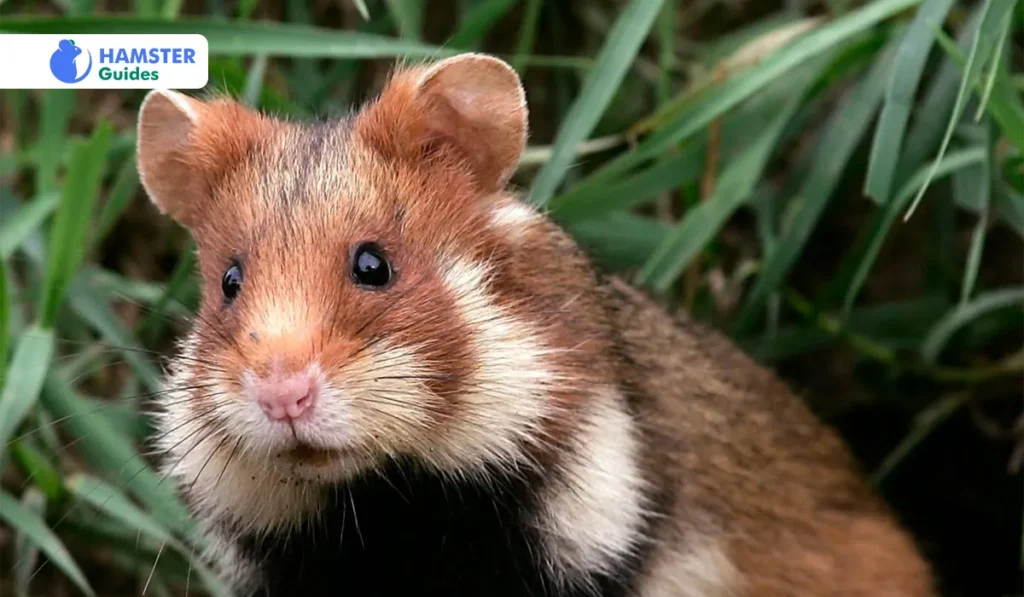
They are taking measures for habitat restoration projects, such as planting native vegetation and creating hedgerows. Also, to support these animals, a suitable environment is established for more food sources for survival.
Furthermore, to protect this animal, social awareness is required. Special media campaigns, public awareness, and different educational programs help gain support and collaboration between humans and wildlife of European hamsters.
Read More: Do Hamsters Live in The Wild?
It is time to inform the community of the eco-friendly need for European hamsters and work on some sustainable methods on managerial grounds. In nutshell, by working in collaboration, a bright future for this adorable species is possible.
The European Hamster in Popular Culture
In popular culture, European hamsters have left their mark throughout history. These include inspiring folklore, literature, and film.
Folklore and Symbolism
Some cultures relate the European Hamster to flexibility, survival skills, and the ability to adapt to different echoes. As a result of its nocturnal behavior and unique appearance, it became a symbol of strength and resilience.
The Hamster in Literature and Film
The attractive nature of the European Hamster has inspired the creativity of writers and filmmakers alike. These fascinating creatures are included in a variety of literary works and films, bringing their appeal to a larger audience.
The hamster of Europe is cute, bringing about originality in writing and filming. These captivating organisms have appeared in numerous written works and movies, making them more popular.
Taking Care of a Pet European Hamster
A European hamster as a pet can be highly fulfilling and satisfying, provided it receives proper care and attention.
Shelter And Environment
When you own a pet European Hamster, the proper housing is necessary to keep them in good general health. There should be an appropriate-sized cage or enclosure that permits burrowing, climbing, and running around.
Paper bedding material mixed with dirt can be provided to enable them to meet their burrowing needs. Other toys like tunnels or secret hiding places will do a great job in improving their habitats.
Food And Health Care
Fresh food is essential for your pet’s health when kept as a domestic animal. They need commercial pallets that fulfill their primary nutrients. Then fresh vegetables and sometimes snacks are occasional treats. Such meal plans provide all the nutrients they require in their natural habitats. Fresh water is also crucial.
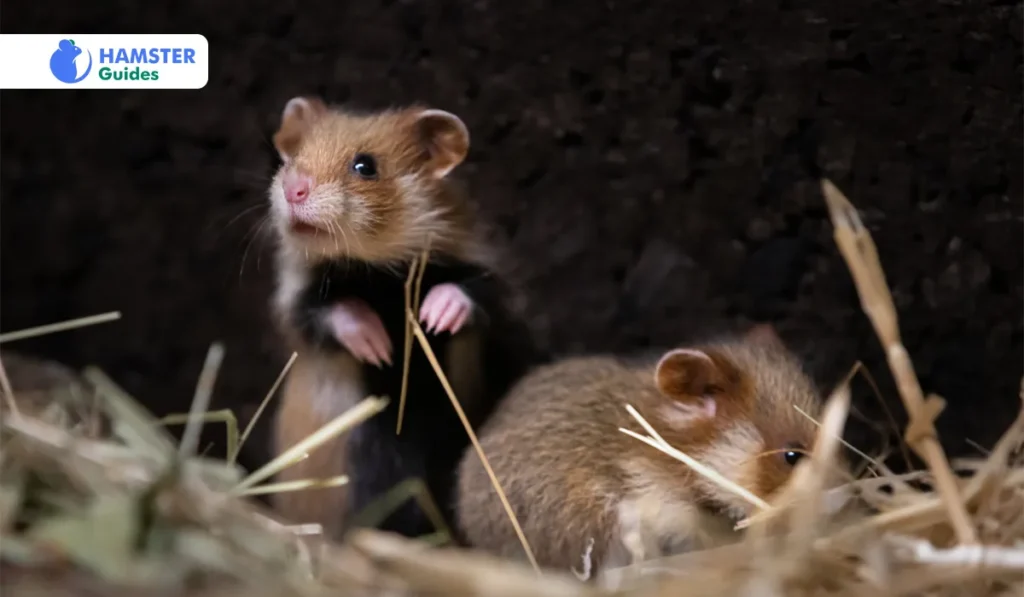
You must take all the steps to ensure your European Hamster remains healthy. Regular veterinary check-ups are vital for your pet’s overall well-being. Vaccinations, if necessary, and regular health exams are essential for timely diagnosis. It will prevent potential future health problems.
Read More: How To Take Care Of A Hamster?
Interaction and Enrichment
In captivity, social interaction is significant to European hamsters. For example, gently handling them or providing supervised playtime for your hamster will significantly improve their communication skills and, hence, their overall well-being. Besides that, you can use things like chewing materials and toys for exercise if you want them to be mentally and physically active.
One thing is confirmed: the European hamster is an amazing creature that attracts naturalists and animal lovers. Understanding the animal’s behavior, including issues such as habitat, nutrition, reproduction, and conservation, helps ensure its survival and welfare and leaves another generation in peace with this species.
A Summarized View
After all sorts of discussion, the provided table gives general information about the European Hamster, which includes its scientific name, description of its body features, what kind of places it prefers to live in, whether it has any behavioral tendencies, what sort of food it consumes, how it reproduces itself, how many are left in the world today, and what measures have been taken to preserve endangered species.
Finally, what importance does this animal have for local people’s lives? Therefore, use these findings when you want to know more about this captivating type of rat within Europe’s ecosystems.
| Category | Description |
| Scientific Classification | Order: Rodentia, Family: Cricetidae, Genus: Cricetus, Species: C. cricetus |
| Physical Characteristics | Size: Approximately 11 to 14 inches in length, Weight: Around 200 to 500 grams, Features: bulky body, small ears, round eyes, and short tail |
| Habitat | agricultural land, Open grasslands, and meadows |
| Geographic Range | Mainly found in countries such as France, eastern Europe, and Germany |
| Behavior | Outside of the breeding season, they are nocturnal and solitary. They are excellent burrowers with complex underground systems. |
| Diet | Omnivorous: consumes grains, roots, insects, small vertebrates, and seeds |
| Reproduction | Mating Season: April to September, Gestation Period: 18 to 22 days |
| Life Span | Wild: 3 to 5 years; Captivity: Up to 8 years |
| Litter Size | 5 to 12 pups |
| Conservation Status | Listed as “Endangered” due to, predation, declining populations and habitat loss |
| Conservation Efforts | Habitat restoration projects, Creation of wildlife and protected areas corridors. |
| Cultural Significance | inspires movies, literature, and culture; represents adaptation and resilience |
The Final Words
In summary, the European Hamster, scientifically called Cricetus cricetus, embodies the resilience and flexibility of flora and fauna in Europe`s numerous landscapes. From its stout body and underground burrows to its omnivorous eating regimen and challenging mating rituals, the European Hamster’s existence cycle displays sensitive stability inside its ecosystem.
However, those charismatic rodents face mounting conservation-demanding situations because of habitat loss and human impacts. By elevating awareness, assisting conservation efforts, and fostering coexistence with human activities, you can ensure the continuing survival and well-being of the European Hamster for generations to come.









Leave a Reply